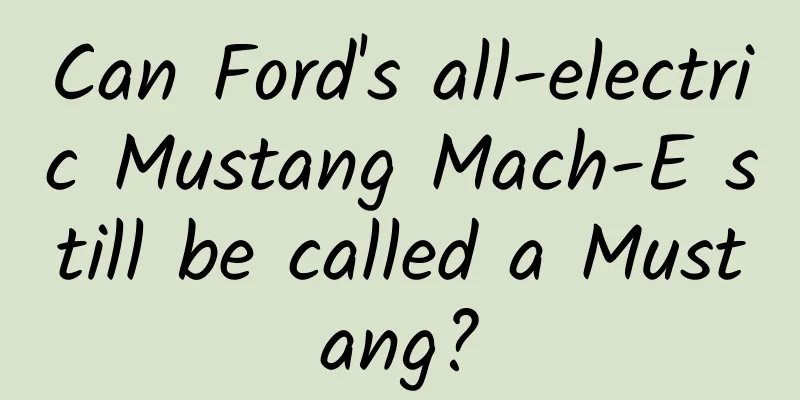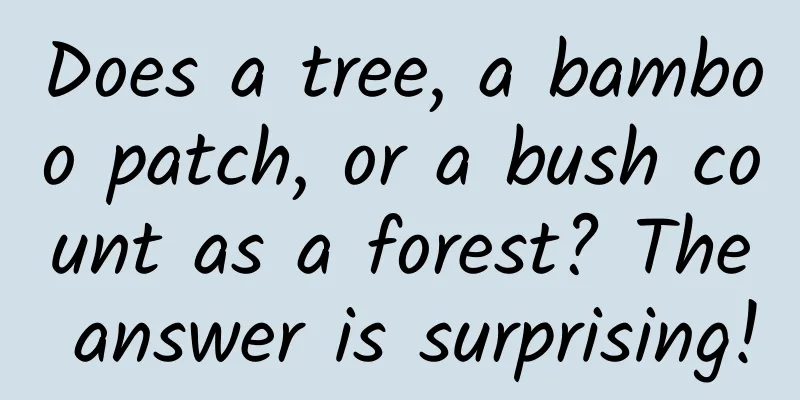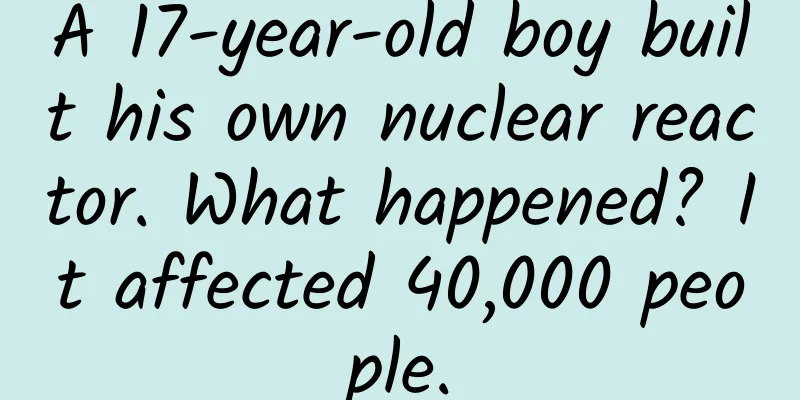B-end designers come to see! Let us take you to understand the design concept of "B-end C-ization"

introductionThe rapid development of Chinese Internet companies is driving an aesthetic revolution in the entire software industry. As the C-end product market gradually becomes saturated, Internet giants are gradually transferring capital to the vast blue ocean of the B-end market. The design concept of "B-end C-end" has also emerged, believing that the C-end model and thinking can be used to design B-end products. backgroundIn addition to the capital slowly shifting to the blue ocean of the B-end market as just mentioned, another point is the rapid development of China's Internet environment, the widespread popularity of smart phones, and the younger working population, which has enabled people to master the use of various software and gradually become picky and cautious in rapidly iterating products. In addition, the constantly optimized and iterated Internet software products have also invisibly built the underlying cognitive foundation for users. Some functions, operations, and interactive logic have been deeply rooted in people's minds, and users have been educated to become "expert players." Therefore, the designs of some new B-end products today should naturally be consistent with some C-end products to a certain extent in the structure layer, framework layer, and presentation layer that are closest to users among the five elements of user experience. This design concept actually solves the pain points of traditional software such as complexity, high threshold, and difficulty of use, greatly reduces the user's cognitive cost and learning cost, and brings efficient, simple, and easy-to-use tools to everyone's daily work. Understanding of B-side C-sideMy understanding of this concept is: "B-end products are similar to C-end products in terms of user experience and visual experience". This is what our designers need to pay special attention to. In traditional thinking, most designers think that B-end is for internal company personnel or merchants. It is just a management system and does not need to be too sophisticated. As for the experience, it remains at the level of "it's OK as long as it works". But in my opinion, whether it is C-end or B-end, its users are actually "people", and they should follow people's cognition of things and a series of complex ergonomic operating habits. Both need to pay attention to the user's experience when using it. Smooth use process, clear information display and efficient behavior efficiency, as well as effective guidance can quickly help users complete their target tasks. Whether it is C-end design or B-end design, meeting these conditions can undoubtedly bring a better experience to users. However, we cannot generalize and think that the design thinking of C-end can be completely reused. The scenarios of B-end products are actually much more complicated than those of C-end products. It should be said that they have their own focuses, and the thinking and design patterns cannot be completely copied. Below I will first talk about their differences, and then give examples to show you in which aspects B-end products can learn from C-end products. The difference between B-end and C-end1. Different usersB-end users are mostly from the same organization, working together as a group. For example: bosses, department heads, employees or merchants. C-end users are relatively single, and the target user group is the main user group, with clear usage goals, preferences and personalities. 2. Different business:Most B-side businesses have multiple dimensions and scenarios. The usage scenarios are closely related to the business. The business processing and data information concerned by different roles in the same system will have very different focuses, which requires global consideration. The processes for different roles to use products vary greatly, requiring more professional solutions for different businesses. C-side businesses generally have a single dimension, relatively fixed business logic, and relatively simple task paths and display content. 3. Different value propositions:The B-side focuses on efficiency, cost, control, data analysis, etc. It pursues product stability, business growth, and ensures product performance and technical security. The C-side focuses on user experience, simplicity of use, and fun. 4. Different product thinking:Most B-end products are based on service thinking and tool-based thinking, which are more rational and help B-end users improve efficiency and achieve business goals. Most C-end products are based on product thinking and gamification thinking, which are more emotional and provide more entertainment and emotional satisfaction. 5. Different product forms:B-end products focus on business organization, and most of them use charts, tables, and models. Most product forms tend to be more vertical or professional panel forms. C-end products focus more on user experience, and use a lot of exaggerated dynamic effects and colorful colors. The specific manifestation of B-end C-ization in products1. Structural layerThe structure layer determines the pattern and order of the options that will be presented to the user. The structure layer is used to design how users arrive at a page and consider where they can go after completing their tasks. Specifically in the form delivery scenario of B-end products, it can be reflected that previous B-end forms were often too lengthy. By drawing on the design of some C-end registration scenarios, the form is split into 3 steps to reduce user fatigue and improve the experience. 2. Framework layerThe framework layer of the product includes: the location of buttons, controls, photos, and text areas. The framework layer is used to optimize the page design layout. Specifically, on the list page of B-end products, it can be seen that the overall buttons, text area positions, search and filter layout design in the list page are actually similar to the product details page in C-end products, and are designed according to the user's reading order and visual focus. 3. Presentation LayerVisual, auditory, and (tactile) experience design. Most of them are reflected in some emotional designs and are also used in B-end products. The future design direction of B-end CLooking at some of the current design styles and trends of C-end products, which ones can be applied to the design of B-end products? 1. 3DThe B-side has a strong demand for data display, and the user's judgment of improving efficiency during use also includes the efficiency of obtaining information data. 3D vision has a natural advantage in data visualization, which can help users understand the core value expressed by data dimensions more quickly. In recent years, the upgrade of hardware facilities such as network speed has also provided a feasible foundation for 3D vision, and designers have also tried to incorporate more 3D elements into product design. 2. EmotionalPeople often think that traditional B-end products are boring and rigid. Nowadays, the design concepts of some new B-end products are trying to get rid of the users' preconceived impression of the products. Therefore, many products are trying to move towards entertainment and IP, and have achieved some relatively good results. In the future, there will be more and more thinking and attempts in this regard. 3. PersonalizationB-end products are highly homogenized, so B-end products also need to customize more personalized brand genes from some product positioning, so that users can develop feelings for the products and achieve the goal of standing out from similar products. SummarizeWhether it is the B-end or the C-end, the purpose is to solve the problems encountered in the business scenario. The users are all people, and we should consider the problem from the perspective of "human nature". Some people say that B-end products generally do not pay attention to design, and the design of C-end products can better meet the designer's pursuit of beauty. I can only say that they have different focuses. The C-end pays more attention to visual experience and attracts users at the perceptual level of visual performance. The B-end is actually more complicated and requires powerful underlying data processing capabilities. The professionalism of the product includes interaction and visual appeal, so that it can be recognized by users and stand out from many products. Designers also need to constantly polish details and optimize the experience to attract and retain users. So, "B-end to C-end" is only common in some aspects, but the core focus is different. We cannot generalize it, but we can learn from it and refer to it. B-end products can also be made very exciting. |
>>: Top navigation vs side navigation, which one is better?
Recommend
Astronomical wonders: The Perseverance rover captured a clear and beautiful solar eclipse on Mars!
A solar eclipse on Earth is caused by the Earth&#...
@You who love spicy food, does eating spicy food prevent cancer or cause cancer? The research results will definitely surprise you
As a common condiment, chili pepper plays an impo...
The operation model of increasing 100,000 followers at 0 cost: budget ≠ resources
We are at a loss in the anxiety of zero budget, b...
Lenovo Air Wireless Bluetooth Music Headphones Review: Wireless control is more flexible, high-fidelity + graphene speakers help you swim in the ocean of music
On November 1, Lenovo held a new product launch c...
Zhang Xiaolong: I am deeply concerned about the impact of expanding the WeChat friend limit to 5,000 friends
Over the years since WeChat was born, the setting...
Casual games are also powerful. From "Journey" and "LittleBigPlanet 3" to look at the Chinese version of PS4 casual games
Opening the game download interface of the Chines...
Do these 5 things well and the click-through rate of information flow advertising materials will increase by 90%
What does craftsmanship require? Humility, persev...
Short video operation topic selection guide
When operating short videos, topic selection, dir...
Why is the Earth a sphere? Not all celestial bodies are spheres!
Since ancient times, there have been countless di...
It turns out that humans are not the only ones who quarantine! Let’s see how animals do it
Wash hands frequently, wear masks, avoid crowds.....
A brief talk about how products resonate with users!
As an operator or marketer, how can you use the h...
How to direct traffic to APP through WeChat mini games?
A few days ago, I was chatting with a friend who ...
How can startups use community operations to boost user growth?
From the perspective of growth hacking, community...
Scientists discover that plants can actually "talk"?
Poplar leaves rustle when wind blows through them...
The high-conversion promotion strategy of Bilibili has been leaked, collect it quickly!
Most marketers who are eager for a young user bas...









